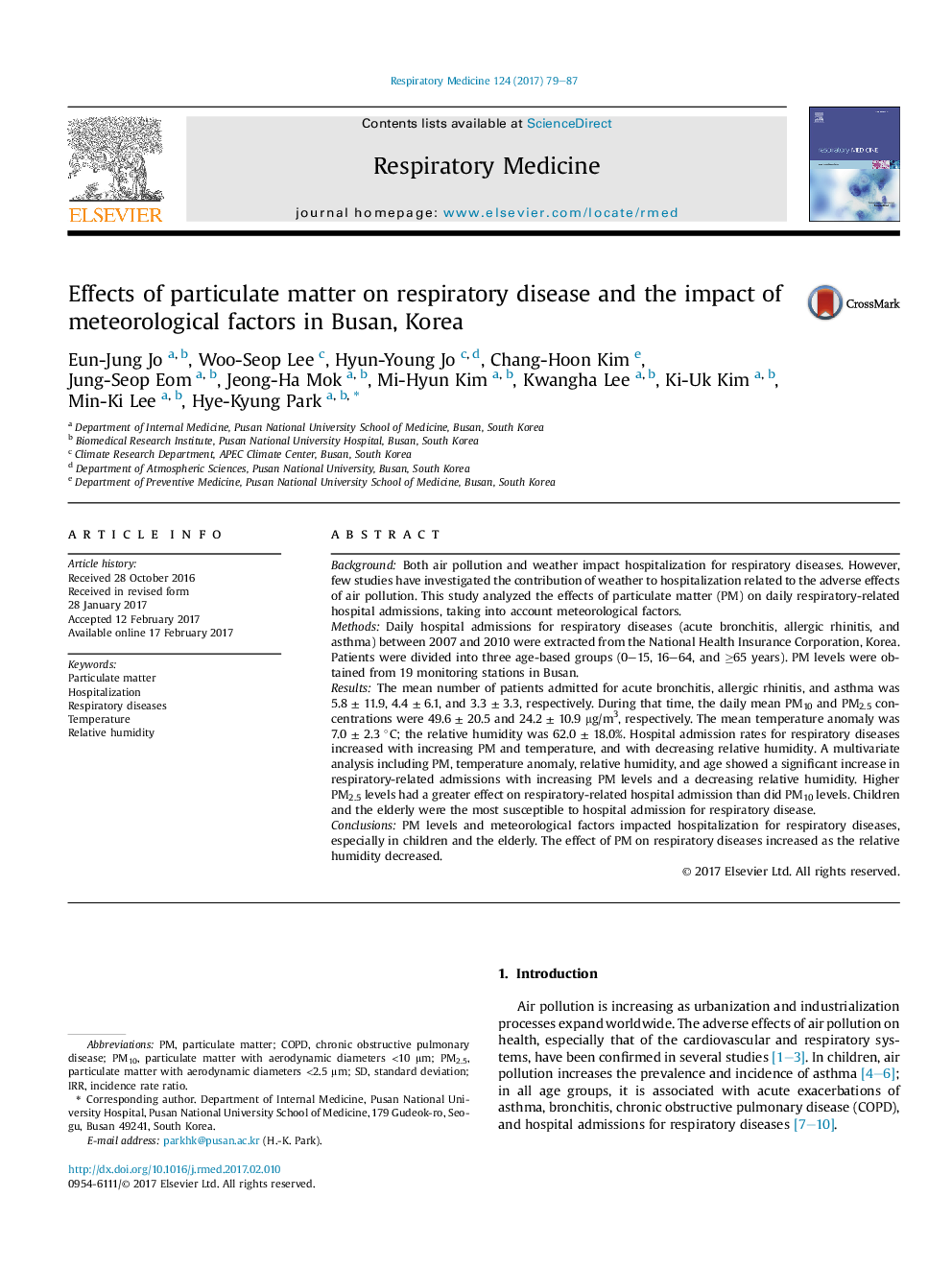| کد مقاله | کد نشریه | سال انتشار | مقاله انگلیسی | نسخه تمام متن |
|---|---|---|---|---|
| 5725046 | 1609442 | 2017 | 9 صفحه PDF | دانلود رایگان |
- Respiratory-related hospital admission rates increased with increasing PM and temperature anomaly as well as with a decreasing relative humidity.
- Higher PM values had a greater impact on hospitalization rates with a decreasing relative humidity.
- PM2.5 levels had an especially strong effect on increasing admission rates, regardless of the PM10.
BackgroundBoth air pollution and weather impact hospitalization for respiratory diseases. However, few studies have investigated the contribution of weather to hospitalization related to the adverse effects of air pollution. This study analyzed the effects of particulate matter (PM) on daily respiratory-related hospital admissions, taking into account meteorological factors.MethodsDaily hospital admissions for respiratory diseases (acute bronchitis, allergic rhinitis, and asthma) between 2007 and 2010 were extracted from the National Health Insurance Corporation, Korea. Patients were divided into three age-based groups (0-15, 16-64, and â¥65 years). PM levels were obtained from 19 monitoring stations in Busan.ResultsThe mean number of patients admitted for acute bronchitis, allergic rhinitis, and asthma was 5.8 ± 11.9, 4.4 ± 6.1, and 3.3 ± 3.3, respectively. During that time, the daily mean PM10 and PM2.5 concentrations were 49.6 ± 20.5 and 24.2 ± 10.9 μg/m3, respectively. The mean temperature anomaly was 7.0 ± 2.3 °C; the relative humidity was 62.0 ± 18.0%. Hospital admission rates for respiratory diseases increased with increasing PM and temperature, and with decreasing relative humidity. A multivariate analysis including PM, temperature anomaly, relative humidity, and age showed a significant increase in respiratory-related admissions with increasing PM levels and a decreasing relative humidity. Higher PM2.5 levels had a greater effect on respiratory-related hospital admission than did PM10 levels. Children and the elderly were the most susceptible to hospital admission for respiratory disease.ConclusionsPM levels and meteorological factors impacted hospitalization for respiratory diseases, especially in children and the elderly. The effect of PM on respiratory diseases increased as the relative humidity decreased.
Journal: Respiratory Medicine - Volume 124, March 2017, Pages 79-87
